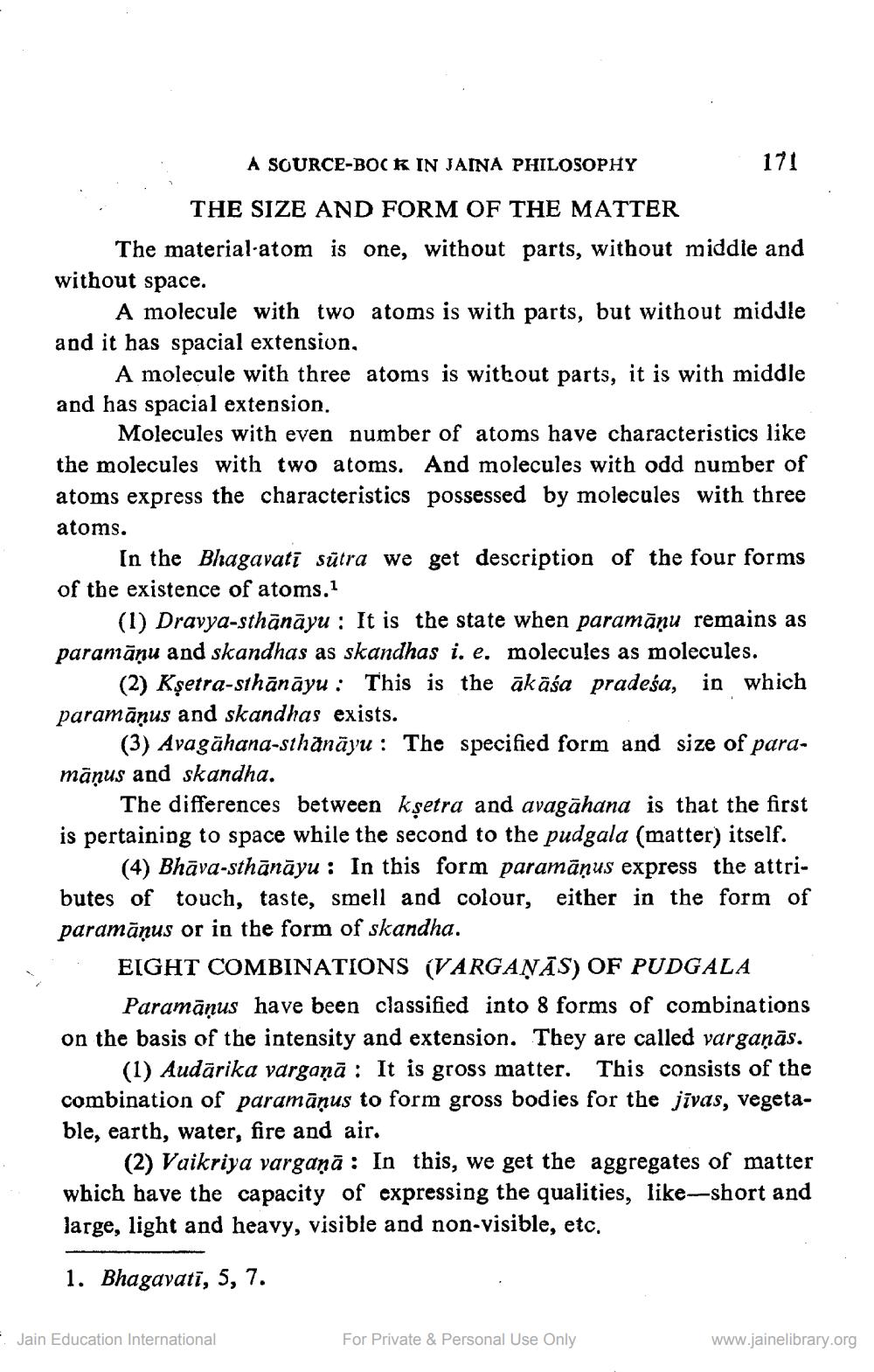________________
A SOURCE-BOCK IN JAINA PHILOSOPHY
171
THE SIZE AND FORM OF THE MATTER The material-atom is one, without parts, without middle and without space.
A molecule with two atoms is with parts, but without middle and it has spacial extension,
A molecule with three atoms is without parts, it is with middle and has spacial extension.
Molecules with even number of atoms have characteristics like the molecules with two atoms. And molecules with odd number of atoms express the characteristics possessed by molecules with three atoms.
In the Bhagavatī sūtra we get description of the four forms of the existence of atoms.1
(1) Dravya-sthānāyu : It is the state when paramāņu remains as paraniānu and skandhas as skandhas i. e. molecules as molecules.
(2) Kşetra-sthānāyu : This is the ākāśa pradeśa, in which paramānus and skandhas exists.
(3) Avagāhana-sthānäyu : The specified form and size of paramānus and skandha.
The differences between kşetra and avagāhana is that the first is pertaining to space while the second to the pudgala (matter) itself.
(4) Bhāva-sthānāyu : In this form paramāņus express the attributes of touch, taste, smell and colour, either in the form of paramānus or in the form of skandha.
EIGHT COMBINATIONS (VARGAŅĀS) OF PUDGALA
Paramānus have been classified into 8 forms of combinations on the basis of the intensity and extension. They are called vargaņās.
(1) Audārika vargaņā : It is gross matter. This consists of the combination of paramānus to form gross bodies for the jīvas, vegetable, earth, water, fire and air.
(2) Vaikriya vargaņā : In this, we get the aggregates of matter which have the capacity of expressing the qualities, like-short and large, light and heavy, visible and non-visible, etc,
1. Bhagavatī, 5, 7.
Jain Education International
For Private & Personal Use Only
www.jainelibrary.org




